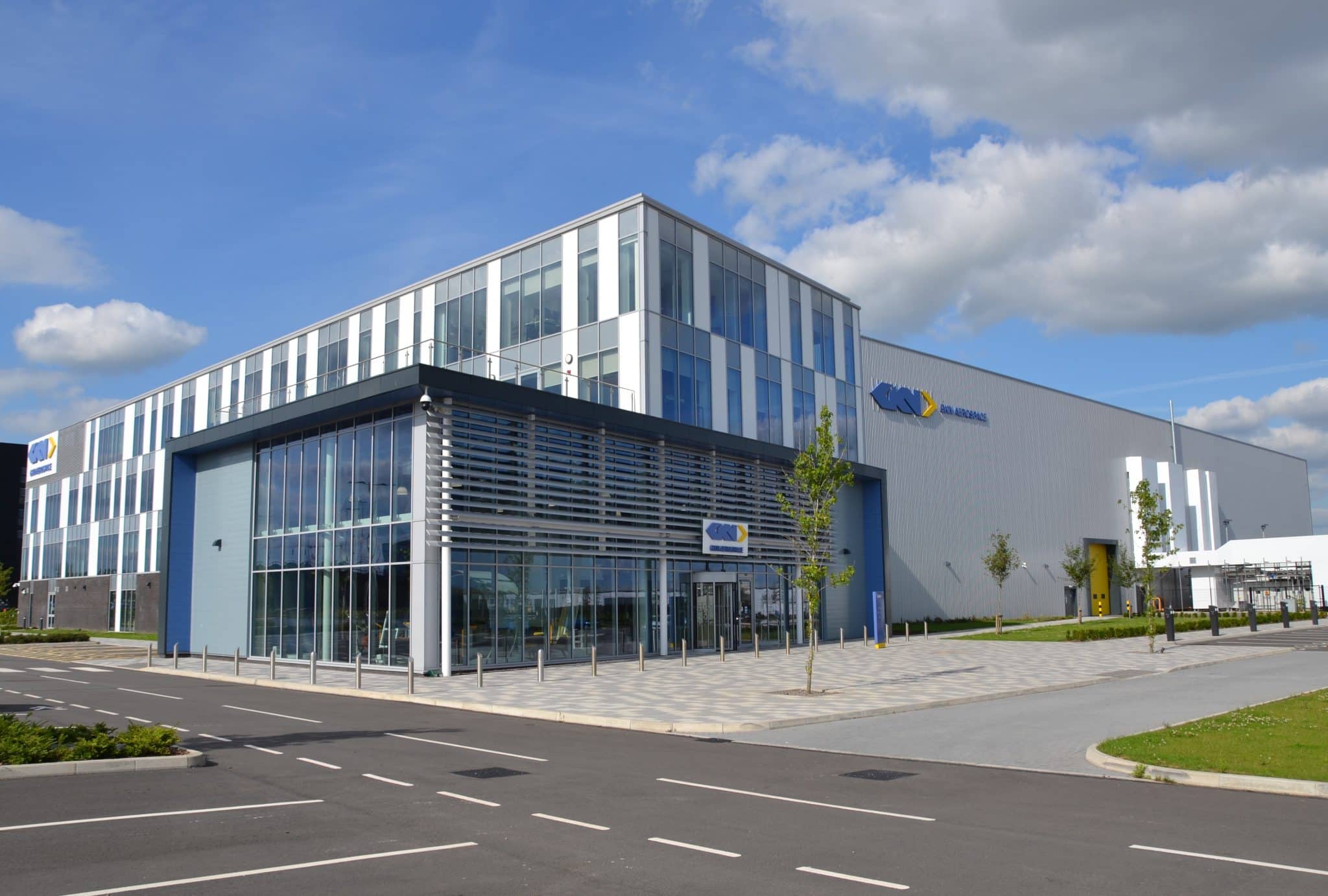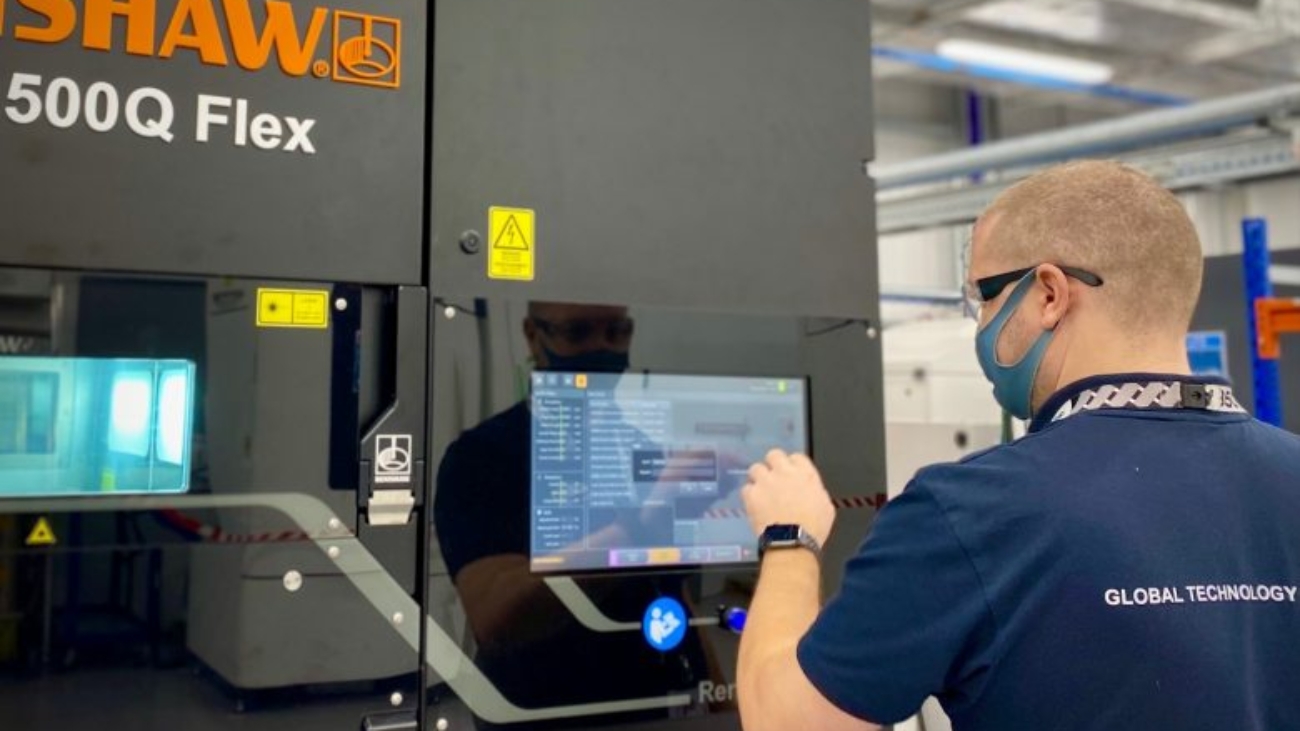Global engineering technologies company, Renishaw, has installed a RenAM 500Q Flex additive manufacturing system at aerospace manufacturer GKN Aerospace’s state-of-the-art Global Technology Centre in Bristol, UK. Taking its place alongside the latest technologies and manufacturing processes for the next generation of aircraft, the RenAM 500Q Flex will provide valuable feedback on how to optimize AM for aerospace applications.
Renishaw first collaborated with GKN Aerospace in 2014, as a part of the Horizon project, which was funded by the Aerospace Technology Institute (ATI), that aimed to develop AM techniques into viable production processes for aerospace components. Since then, GKN Aerospace has developed its understanding of AM and uses the process across all business streams, developing components for aero-engines, civil aero-structures, and functional systems. After seeing the benefits of AM, such as part consolidation, shorter manufacturing value chain time, and a reduction in defects – GKN Aerospace and Renishaw discussed how the aerospace manufacturer could benefit from the new Flex platform, with new features including the ability to quickly change materials and do a powder count more easily than on a recirculating system.

“We wanted to find an advanced AM system to help us to develop a highly stable, highly repeatable, and highly measurable manufacturing process that results in zero defects,” said Bradley Hughes, Senior Research Engineer at GKN Aerospace. “While we knew the benefits of the existing RenAM 500Q, the Flex platform offers a variety of benefits that are not always possible in AM. The in-process monitoring capabilities, for example, enable us to monitor performance metrics that are essential for the aerospace industry. The system is also designed to enable material changes, something that is normally a complex process when working with AM systems, so it allows us to be more efficient when working on products using different materials.”
Manufacturing on Demand
“Working collaboratively with customers enables us to understand their requirements and develop systems that provide flexibility and productivity levels they need,” said Bryan Austin, Director of Sales at Renishaw’s Additive Manufacturing Group. “Collaborating with GKN Aerospace not only allows us to understand how the aerospace industry can benefit from the Flex platform, but we can also better understand the future requirements of the aerospace sector in additive manufacturing.”
“By engaging with the Renishaw team and collaborating during machine development, we can help them build a machine that really meets customer requirements,” continued Hughes. “Renishaw has been closely involved in the entire process of commissioning the RenAM 500Q Flex, offering support with installation, training, and resolving any initial issues when learning to operate the machine.”
The RenAM 500Q Flex is a four laser AM machine that offers the same industry-leading optical, chamber, and gas-flow designs as the RenAM 500 series, while providing additional flexibility when changing powders. Users can quickly change powders in-house, to meet demand, while parameters and material properties transfer seamlessly between systems thanks to the common build environment.
You might also like:
Deggendorf Institute of Technology orders MPO 100 printer: When procuring the new system, DIT focused on a high resolution – over the largest possible printing range – for the production of diffractive optical elements (DOE) and a wide selection of available photoresists. “The MPO 100 was particularly convincing due to its wide range of applications as well as its high-precision stage and stitching-free structuring. Another major advantage of the system is the integrated flow box,” said Daniel Schäffer, research associate and doctoral student at the Deggendorf Institute of Technology, who was largely responsible for the selection process.
* This article is reprinted from 3D Printing Media Network. If you are involved in infringement, please contact us to delete it.
Author: Edward Wakefield


Leave A Comment